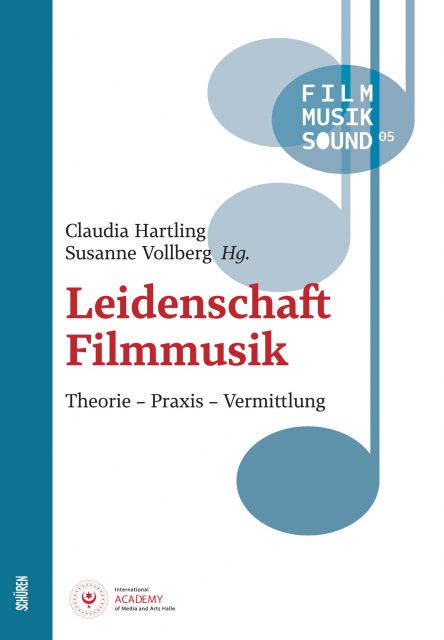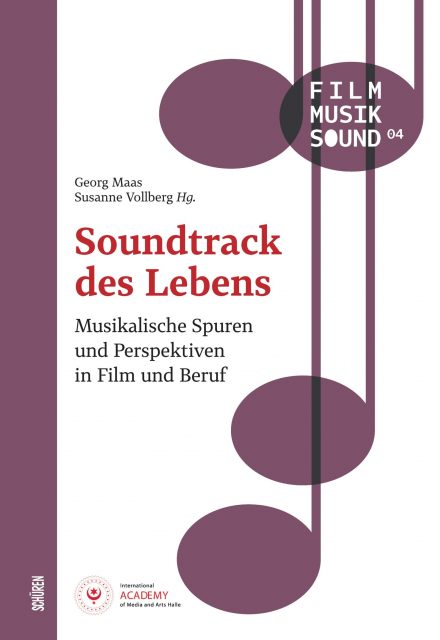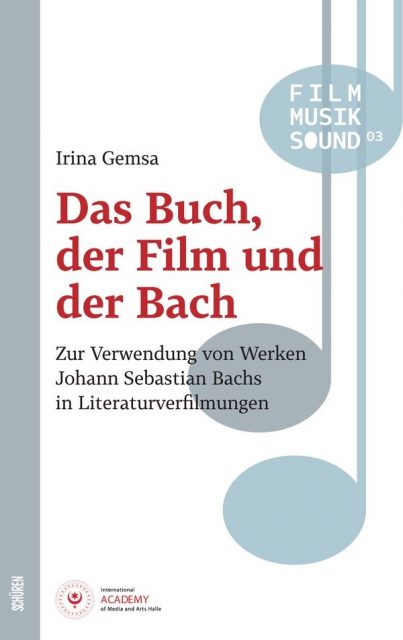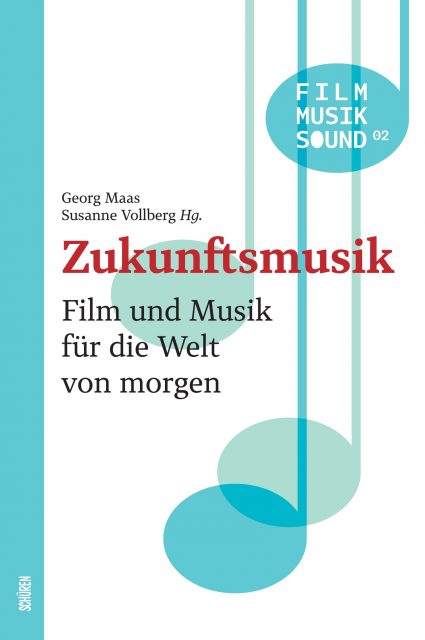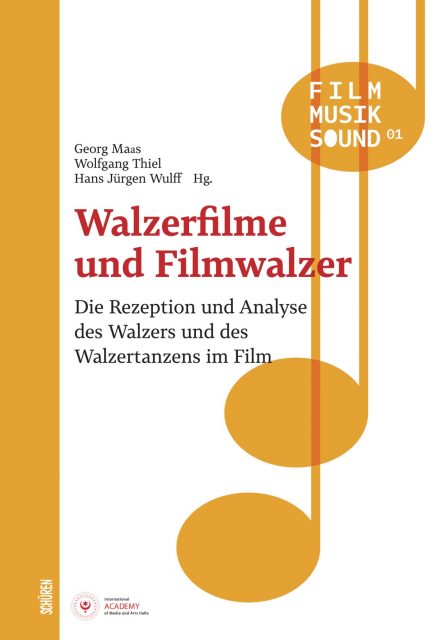Book serie "FILM - MUSIK- SOUND"
Film music in book form
Music and sound were a part of film from the beginning, shaping its fascination for the audience. From the original acoustic film accompaniment by piano and sound effects, film developed interdependent relationships with its soundtrack to the present day between silence and acoustic overpowering, triviality, and innovation.
Published by the International Academy Media and Arts in Halle (Saale), the “FILM – MUSIK – SOUND” publication series is dedicated to the interaction of film, music, and sound in all its facets. The thematic focus is on film music and musical film in the past, present, and future, supplemented by congress contributions from the Film Music Days Saxony Anhalt, which have been held annually in Halle since 2007.
05. LEIDENSCHAFT FILMMUSIK
THEORIE – PRACTISE – MEDIATION
Anyone familiar with the Film Music Days Sxony-Anhalt cannot imagine film music without passion. Film music is produced with passion, received with passion and discussed with passion. At the same time, the approaches to dealing intensively with film music can be very different and, depending on the specialist discipline, focus on very different issues. What role does film music play in the lifetime perspective? How is music/music-making staged in films? And – historically speaking – what role did twists and waltzes play in feature films?
The fifth volume in the series focuses on the relationship between music, film and personal life stories in four different areas. In a colorful interdisciplinary kaleidoscope, the volume brings together reflections from academics and practitioners on the use of music in films such as Some like it Hot, Elvis, Harold and Maude or Dirty Dancing, in series such as Chernobyl or The Same Sky, in works by directors such as Quentin Tarantino, Jim Jarmusch or Alfred Hitchcock. This is not just about academic analysis, but also about the perspective of practice and the question of how a productive exchange between research and practice can succeed. This is also exciting for the (often passionate) discussion and teaching of film music in schools and universities.
04. SOUNDTRACK DES LEBENS
MUSICAL TRACES AND PERSPECTIVES IN FILM AND PROFESSION
What significance does music have at different stages of life and what role does it play in an individual’s life’s work? Where do films and film music address the “soundtrack of life”? The fourth volume in the series looks at different aspects of the significance of music and life from the perspectives of music education, film and musicology. On the one hand, it deals with the powerful significance of music in certain life situations using the example of biographical feature films about musical personalities, in which the music of the film accompanies the life story of the main character, and with so-called coming-of-age films, whose soundtrack reflects the attitude to life of their protagonists. In addition, the research focuses on the biographies of selected musical personalities. These include the reappraisal of “forgotten” film music biographies (as in the case of André Asriel), film music careers that are not obvious at first glance (in the case of George Martin) or the special relationship of directors such as Hitchcock or Bergman to music.
03. DAS BUCH, DER FILM UND DER BACH
ON THE USE OF WORKS BY JOHANN SEBASTIAN BACH IN LITERARY ADAPTATIONS
This work examines films that are based on literary models and that always contain music by Johann Sebastian Bach as film music. The aim is to examine how the original novel and the finished film interpret each other and then build on these results to see to what extent the music of Johann Sebastian Bach may have meaningful effect on the auditorium in the director’s sense, including on an acoustic level. The music examined is just as diverse as the literature sources; there are, among other things, Piano, cello and violin music, but also vocal works. The primary literature comes from German, French, Austrian, Russian and English literature. Various film genres are included, from adventure films to social dramas. The productions are international as well. Five films are examined very closely in extensive sections in terms of characters, character constellation and narrative structure. Two chapters focus primarily on films that contain a special work by Bach, one Toccata and Fugue in D minor, BWV 565, and one the Goldberg Variations, BWV 988.
Films covered include The Wall (A 2012), We Murder Stella (A 2017), The Money (F 1981), Extension du domaine de la lutte (F 1999), The Piano Teacher (A/F 2001).
02. ZUKUNFTSMUSIK
FILM AND MUSIC FOR THE WORLD OF TOMORROW
Curiosity about what the future holds has accompanied human history to the present. Peoples need for prediction and planning is closely related to this, but so is artistic transformation, the fictional design of future worlds in works of visual art, in utopian novels, cinema films, or television series. The view of the future is tied to history as much as to the present. In the context of film and music, the second volume of the series highlights various facets of future thinking: How do film music and sound design sound when it comes to cinematic visions of the future in science fiction or dystopias?
Contributions and ideas by Werner Barg, Marcel Barsotti, Karim Sebastian Elias, Franziska Heller, Peter Imort, Christiane Imort-Viertel, Franziska Kollinger, Peter Kutin, Georg Maas, Richard Nebe, Simon Spiegel, and Susanne Vollberg.
01. WALZERFILME & FILMWALZER
THE RECEPTION AND ANALYSIS OF THE WALTZ AND WALTZ DANCING IN FILM
Its popularity, musical recognition factor, and the wealth of images and associations surrounding it made the waltz a versatile film music set piece early on – from silent film times to talking films. The audience was able to join the music directly, an essential prerequisite for film music to have the anticipated effects on the audience. The consistency with which the waltz accompanied the history of film, but also the diverse contexts in which it can be found, provided the impetus for the present anthology. It combines very different thematic journeys of discovery for waltz films and film waltzes.
